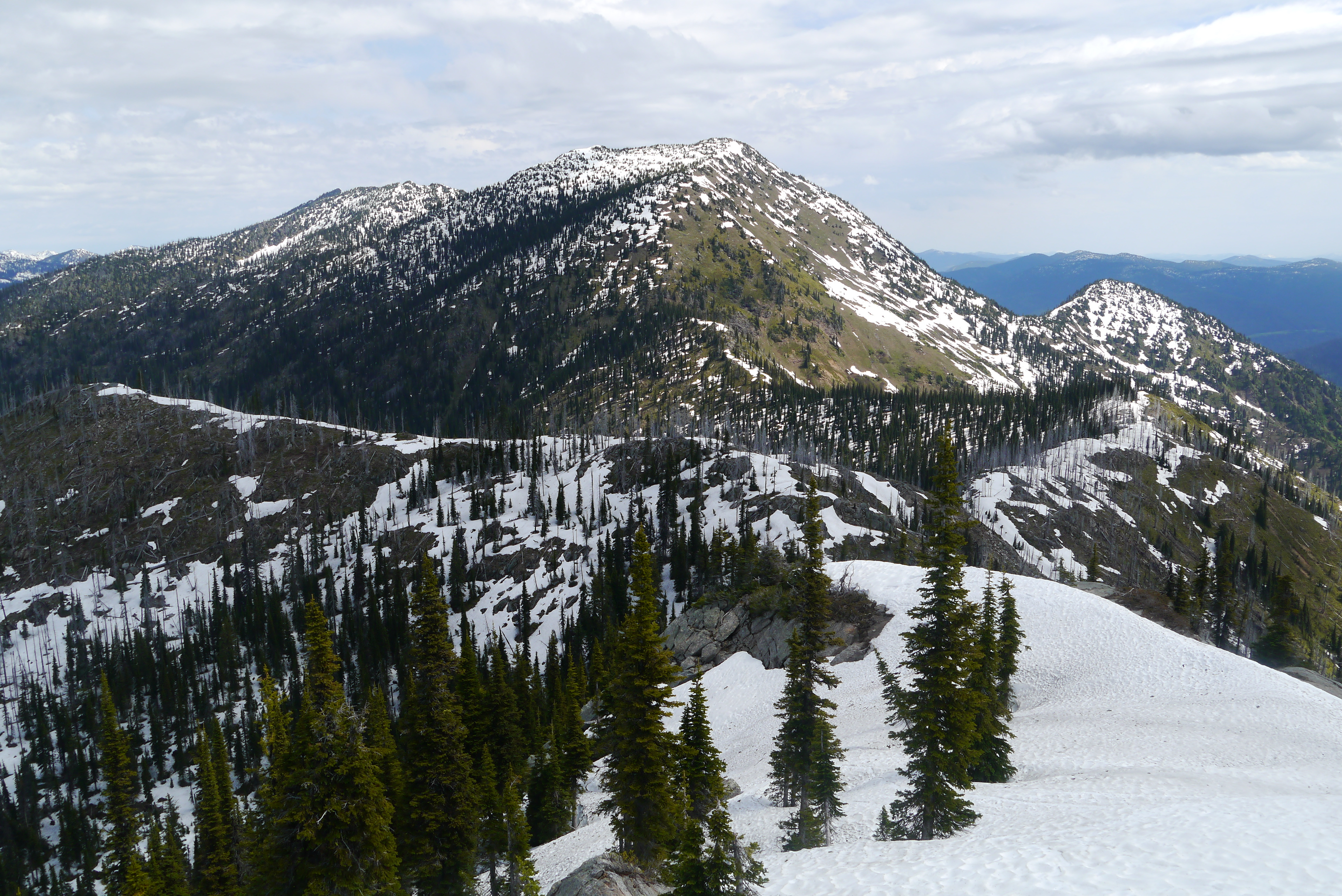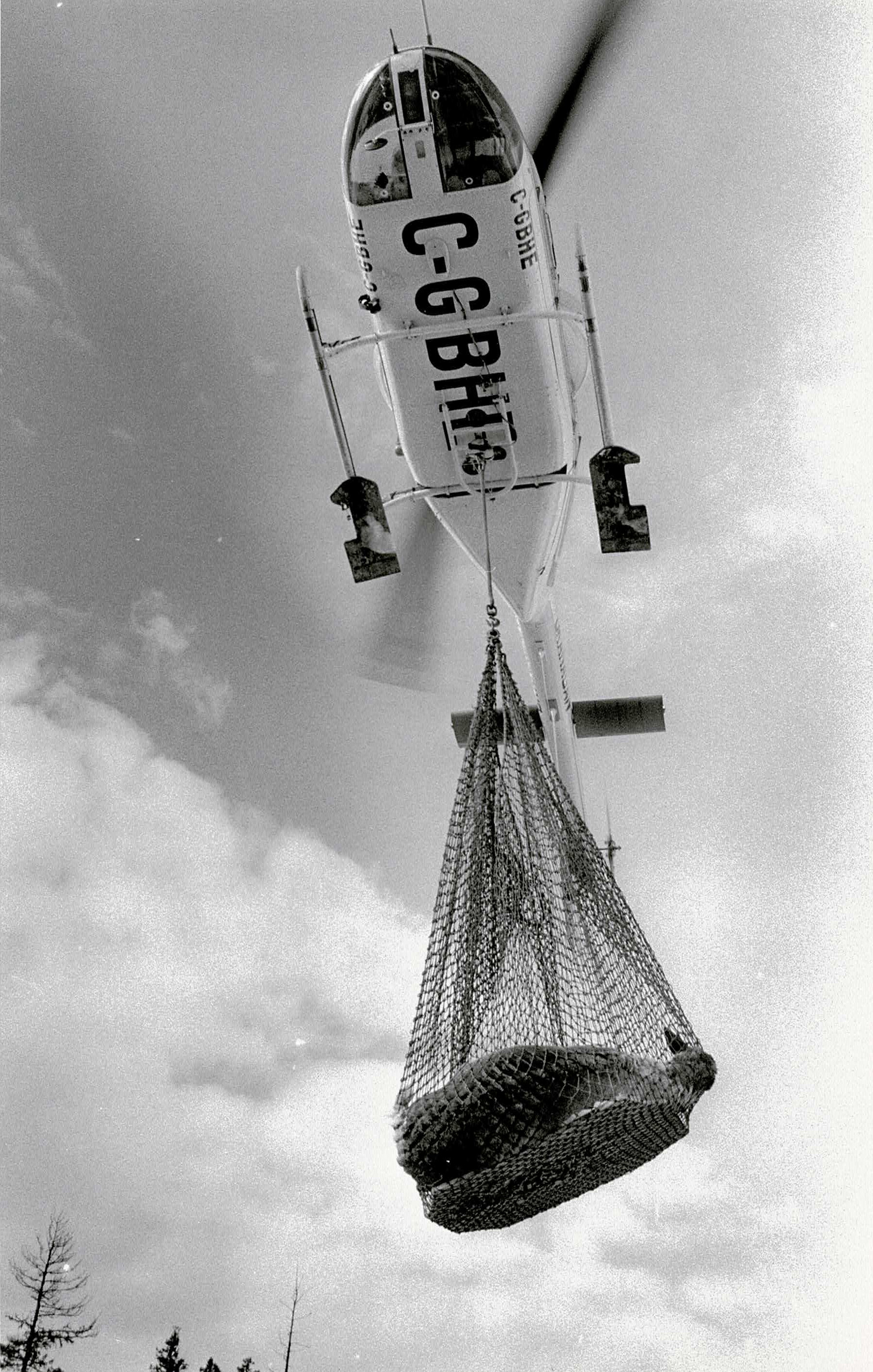About Mountain Caribou
INTRO and NOMENCLATURE
Under the Endangered Species Act, a distinct population segment—or DPS—is a vertebrate population or group of populations that is discrete from other populations of the species and significant in relation to the entire species (Fisheries.noaa.gov). The southern mountain caribou is an ecotype or distinct population segment (DPS)1 of boreal woodland caribou (rangifer tarandus caribou) adapted to the inland montane rainforests of the Pacific Northwest. Though once ranging as far south as the Salmon River in Idaho (Evans 1960), the current population of southern mountain caribou is now limited to interior British Columbia, where 15 extant sub-populations (two of the originally identified 17 have since been extirpated) are collectively estimated to number 1,356 individuals (COSEWIC 2014). Idaho’s caribou—known to biologists and conservation managers as the South Selkirk sub-population—could still be found in the jagged peaks and old-growth forests of northeastern Washington, northern Idaho, and northwestern Montana as recently as 2019. That is, however, until members from the last US-ranging caribou herd were airlifted to a captive breeding facility in British Columbia in January of that year, marking the official extirpation of the Idaho sub-population. While there is still hope of establishing a viable population of mountain caribou in Idaho, for now, the ‘gray ghost’ is just that: a ghost.
ECOLOGY
The British novelist L.P. Hartley once famously wrote: “The past is a foreign country; they do things differently there.” Mountain caribou also do things differently.
In contrast to the commonly thought of barren ground caribou of the Arctic—animals that migrate across vast distances and in large herds, mountain caribou migrate vertically, between different mountain elevation bands, in small and widely dispersed groups averaging 5.7 animals (McLellan 2010). And unlike other cervids that move to lower elevations in the winter (deer or elk, for example), mountain caribou follow a unique late-season migration pattern that takes them higher in elevation. Beginning in mid-elevation (4,500 feet) cedar-hemlock forests in fall and early winter, they feed on residual summer forbs and lichen-heavy deadfall until the snowpack deepens and solidifies. At this point, they use their large, snowshoe-like hooves to climb to alpine and subalpine ridgelines (6,000 feet or more). With the snowpack forming an access barrier against predators, mountain caribou stay and feed in the high country for the duration of winter and early spring, subsisting exclusively on bryoria fremontii and alectoria sarmentosa—lichens commonly found on old growth Englemann spruce and subalpine fir trees (Terry et al., 2000; Apps et al. 2001). Here they remain mostly stationary until the spring warm-up triggers a downward migration which then follows green-up back to the mountain summits for summer. In what is also likely a predator avoidance strategy, calving cow caribou make a second migration to the snow-covered ridgelines in early summer to give birth (Bergerud 1984).
Former IDFG wildlife biologist Gregg Servheen on southern mountain caribou ecology:
CONSERVATION
Check out the current South Selkirk caribou managment plan (2018-2022) from the Selkirk Caribou International Technical Working Group.
No matter what they’re called—South Selkirk caribou, mountain caribou, or black caribou (as a few North Idaho old timers still call them)—the issues faced by present as well as extirpated animals are the same: habitat fragmentation and destruction due to resource extraction (primarily timber and mining), human development, large wildfires, ecosystem change and altered predator/prey regimes, habitat intrusion from winter recreative practices, and, perhaps most urgently of all now, climate change (COSEWIC 2014).
Since the 1980s, conservation efforts have been made by federal, state, and tribal agencies to combat these threats, including several caribou augmentation programs, the listing of the South Selkirk herd as endangered under the endangered species act, the designation of critical caribou habitat in 2016, and even periodic wolf culls by helicopter. As vigorous and unwavering as these efforts have been however, they have not been enough to keep South Selkirk mountain caribou on the landscape. Why?
Former IDFG Conservation Officer Greg Johnson discusses some of the factors behind the decline of Idaho’s caribou:
SPACE AND TIME
The decline and extirpation of Idaho’s mountain caribou is fundamentally a spatial or spatiotemporal issue. Think about it this way: mountain caribou hacked the concept of winter range as used by large herbivores and their predators. When other cervids on the landscape go down, drawing their predators with them, caribou go upslope and ensconce themselves in a nutrient-poor yet predator-free vacuum. The tradeoff works and has worked for millennia: under ideal environmental conditions (now uncommon), mountain caribou are able to greatly reduce their exposure to predators for 4-6 months of the year. For this reason, as well as for other limiting environmental factors, caribou are less productive (one calf per year) and occur in lower population densities compared to deer, elk, or moose—a natural lack of abundance that is likely strategic (Bergerud 1992). The special ingredient that sustains them in their months-long sojourn in herbivore outer space—the Arrakean spice melange, as it were, that mountain caribou alone have the tech to mine (snowshoes) and that allows them to subsist where others cannot—is a mixture of the two arboreal hair lichens mentioned above: bryoria fremontii and alectoria sarmentosa. Because lichens are a low energy food source, caribou must consume approximately 40g per kilogram of body weight in the winter, which, for a 400-pound bull caribou, equates to 16 pounds of lichen per day (Rominger et al., 1996). In addition, lichens are very slow growing, and their light weight means they are often blown away by wind events. As a result, the only place where lichens can be found in heavy, mountain caribou-sustaining loads are the limbs of old growth timber, into which caribou lift themselves using the deep snowpack.
The spatiotemporal recipe for mountain caribou existence is space away from other cervids and their predators—deep snowpack on subalpine ridgelines—plus the temporal dimension necessitated by old growth stands and their heavy lichen loads (Apps et al., 2013; Johnson et al. 2015). A commitment to mountain caribou conservation, therefore, requires an acute sensitivity to these unique spatial and temporal dimensions and the ways in which they distinguish the worlds of mountain caribou from those of other cervids, as well as humans. Caribou time, as we’ve come to think of it, is slow or dilated relative to our own; it unfolds beyond the scale of forests grown for board feet of lumber. And caribou space, in contrast to the generalist spatialities of other, highly adaptable cervids that occupy wide and expanding areas of North America, is fragile and specific. Being contingent upon factors such as deep snowpack, old growth timber, and heavy lichen loads, mountain caribou are the time-spaces they inhabit. Without them, they vanish.
In short, mountain caribou survival requires more space and more time than we’ve been able to provide or imagine.
Timeline
Prior to European Settlement
United States southern mountain caribou population estimated at 800 individuals or 10-13% of the total North American population (Canada and US combined)
1860-1900
Sharp decline in Idaho caribou numbers due to market hunting associated with railroad, timber, and mining industries
1913
Idaho bans caribou hunting
1967
Trapper Creek and Sundance fires significantly alter mountain caribou habitat in Idaho Selkirks
January 14, 1983
Emergency listing of South Selkirk Caribou subpopulation in Idaho, Washington, and BC as endangered (fully listed in 1984) under the U.S. Endangered Species Act
1983
Pre-augmentation South Selkirk subpopulation (Idaho and Washington) estimated at 25-30 individuals
1987
1988
2nd Idaho augmentation: 24 caribou moved from B.C. to Ball Creek, Idaho
1990
3rd and final Idaho augmentation: 12 individuals moved from Blue River, B.C. to Ball Creek, Idaho
1996-1998
Washington augmentations: 43 caribou relocated to Washington (19 to Gypsy Meadows, 13 to Sullivan Creek) and British Columbia (11 to Kootenay pass)
2002-2009
population increases from 34 to 46 after initial decline in translocated caribou
2007
last documented caribou in Two-Mouth portion of South Selkirk Caribou Management Area
2010
beginning of sharp decline from 46 individuals in 2009 to 3 in 2018
2012
USFWS designates 30,000 acres of critical habitat along the Idaho-Washington border where it meets Canada
2018
3 caribou (all cows) documented in 2018 census
2019
Last known Idaho-ranging caribou is captured via helicopter and transported to a different subpopulation in Canada, leaving the South Selkirk Caribou herd functionally extinct
References
Apps, C.D., McLellan, B.N., Kinley, T.A., & Flaa, J. (2001). Scale-Dependent habitat selection by mountain caribou, Columbia Mountains, British Columbia. J Wildlife Manage, 65:65–77
Apps, C.D., Mclellan, B.N., Kinley, T.A., Serrouya, R., Seip D.R., & Wittmer H.U. (2013). Spatial factors related to mortality and population decline of endangered mountain caribou. J Wildlife Manage, 77:1409–1419
Bergerud, A.T., Butler, H.E., & Miller, D.R. (1984). Antipredator tactics of calving caribou: dispersion in mountains. Can J Zool, 62:1566–1575
Bergerud A.T. (1992). Rareness as an antipredator strategy to reduce predation risk for moose and caribou. (McCullough D.R., Barrett, R.H. Eds.). Wildlife 2001: Populations. Springer, Dordrecht. https://doi.org/10.1007/978-94-011-2868-1_77
COSEWIC. (2014). COSEWIC assessment and status report on the Caribou Rangifer tarandus, Northern Mountain population, Central Mountain population and Southern Mountain population in Canada. Committee on the Status of Endangered Wildlife in Canada, Ottawa. Xxii–113. www.registrelep-sararegistry.gc.ca/default_e.cfm
Evans, Henry Frank. (1960). “Preliminary investigation of caribou in northwestern United States.” Graduate Student Theses, Dissertations, & Professional Papers. 6468. https://scholarworks.umt.edu/etd/6468
James, A.R.C., Boutin, S., Hebert, D., & Rippin, A. (2004). Spatial separation of caribou from moose and its relation to predation by wolves. J Wildlife Manage, 68:799–809
Johnson, C.J., Ehlers L.P.W., & Seip, D.R. (2015). Witnessing extinction—cumulative impacts across landscapes and the future loss of an evolutionarily significant unit of woodland caribou in Canada. Biol Conserv, 186:176–186
McLellan, B.N. (2010). An historic perspective of mountain caribou distribution and abundance. BC Ministry of Forests, Research Branch; Victoria: https://cmu.abmi.ca/wp-content/uploads/2017/09/McLellan-History-of-Mountain-Caribou4.pdf
Rominger, E. M., Robbins, C. T., & Evans, M. A. (1996). Winter foraging ecology of woodland caribou in northeastern Washington. The Journal of Wildlife Management, 60:719–728. https://doi.org/10.2307/3802370
Terry E.L., McLellan, B.N., & Watts, G.S. (2000). Winter habitat ecology of mountain caribou in relation to forest management. J Appl Ecol, 37:589–602
Wittmer, H. U., Sinclair, A.R.E., & McLellan, B.N. (2005). The role of predation in the decline and extirpation of woodland caribou. Oecologia, 144:257–267


